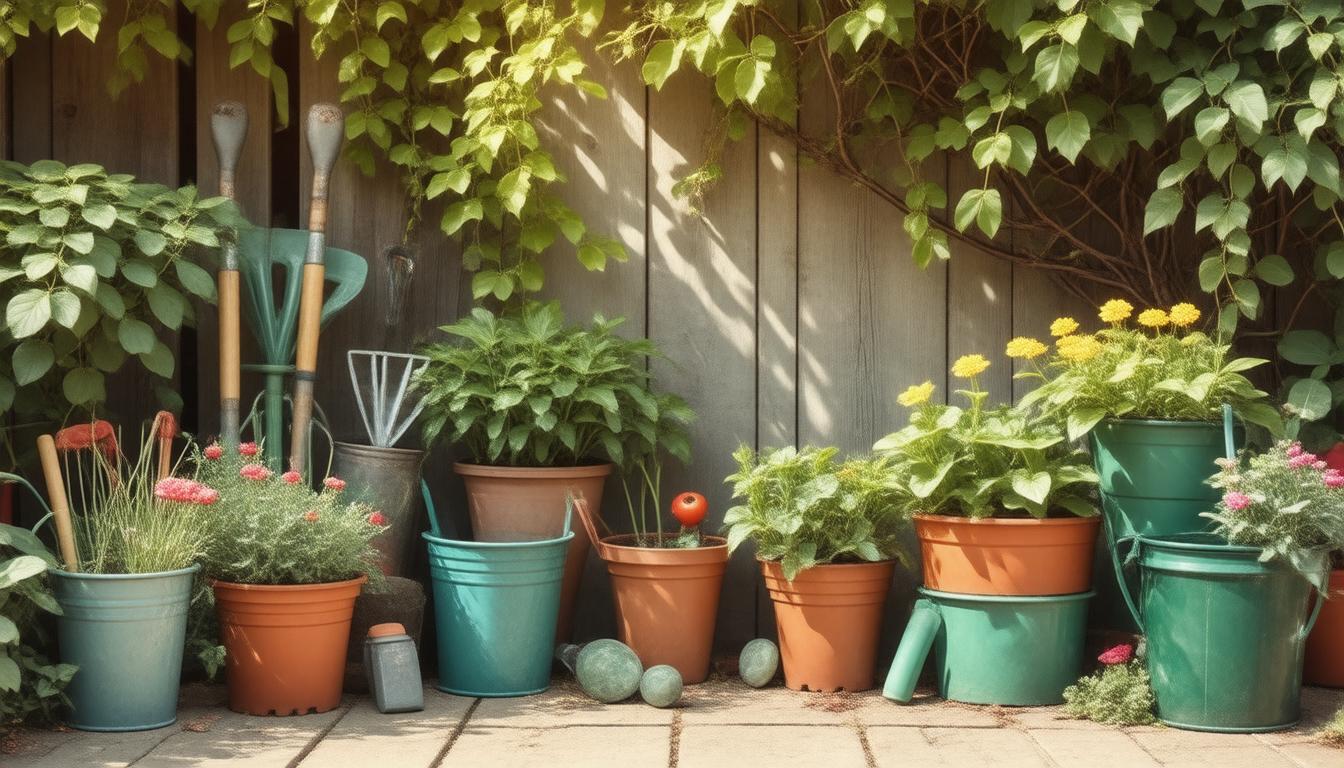Gardening is a rewarding and fulfilling hobby that allows you to connect with nature while beautifying your surroundings. Whether you are a seasoned gardener or just starting your journey into the world of gardening, mastering essential outdoor plant tips can significantly enhance your gardening experience. From understanding your garden’s unique environment to seasonal care practices, effective outdoor plant tips can mean the difference between a thriving garden and a lackluster space. In this article, we will explore vital outdoor plant tips that will help you cultivate healthy plants and create an inviting outdoor space.
Key Takeaways
- Assessing your garden’s unique environment is crucial for plant success.
- Selecting the right plants ensures compatibility with your space and climate.
- Proper soil preparation enhances plant health and growth potential.
- Effective watering techniques are vital for maintaining thriving gardens.
- Regular seasonal care helps prevent pests and promotes healthy plant development.
Understanding Your Garden’s Environment
Understanding your garden’s environment is crucial for cultivating healthy and thriving plants. As you embark on your gardening journey, it’s essential to assess the specific conditions in your outdoor space. Factors such as sunlight exposure, soil type, and climate greatly influence plant growth and overall garden success. For optimal results, consider these outdoor plant tips: First, observe the sunlight patterns throughout the day; most plants prefer full sun, while some thrive in partial shade. Next, test your soil to understand its pH and nutrient content—this can guide you in selecting the right plants that will flourish in your garden. Additionally, keep in mind the local climate; choose varieties that are well-suited for your region to ensure resilience against pests and diseases. By tailoring your choices to your garden’s unique environment, you set a solid foundation for a lush and vibrant outdoor space.
Choosing the Right Plants for Your Space
When it comes to enhancing your outdoor space, choosing the right plants is essential for creating a vibrant and inviting environment. Here are some valuable outdoor plant tips to consider as you embark on your gardening journey. First, assess the amount of sunlight your area receives. Plants like sunflowers and lavender thrive in full sun, while ferns and hostas prefer shady spots. Additionally, consider the climate and soil type of your location; drought-tolerant species are ideal for dry climates, whereas tropical plants flourish in warmer, moist regions. Don’t forget about your personal style; opt for flowers that reflect your aesthetic vision—whether it’s colorful blooms or lush green foliage. By selecting plants that are well-suited to your specific conditions, you can cultivate a flourishing garden that not only pleases the eye but also enhances your outdoor living experience.
‘To plant a garden is to believe in tomorrow.’ – Audrey Hepburn
Soil Preparation and Amendments
Soil preparation is a crucial step in ensuring a successful outdoor planting experience, and here are some valuable outdoor plant tips to keep in mind. Before you begin planting, evaluate the current structure and composition of your soil. To enhance its fertility and improve drainage, consider incorporating organic matter such as compost or well-rotted manure. These amendments not only enrich the soil with nutrients but also help retain moisture, making it ideal for supporting a variety of plants. Additionally, testing your soil pH can reveal if your soil requires any specific amendments to create a balanced environment for your plants. As you prepare your garden beds, remember to till the soil to a depth of at least 12 inches, facilitating root penetration and air circulation. By paying attention to these soil preparation techniques, you set the foundation for robust plants and a thriving garden.
Watering Techniques for Optimal Growth
When it comes to achieving vibrant and healthy plants, understanding effective watering techniques is crucial. Outdoor plant tips emphasize the importance of proper hydration as a fundamental aspect of plant care. Firstly, timing your watering sessions can make a significant difference; early morning or late afternoon is ideal, as this reduces evaporation and allows plants to absorb moisture more efficiently. Additionally, the method of watering plays a vital role; incorporating drip irrigation or soaker hoses can deliver consistent moisture directly to the roots, while minimizing weed growth and moisture loss. It’s also recommended to observe your plants closely and apply the ‘soak and dry’ method, which entails thoroughly drenching the soil and then allowing it to partially dry between waterings to encourage deep root growth. By following these outdoor plant tips, gardeners can ensure their plants thrive and flourish throughout the growing season.
Common Pests and How to Manage Them
When it comes to nurturing your garden, understanding common pests is crucial for maintaining healthy plants. One of the best outdoor plant tips is to familiarize yourself with the types of pests that can invade your space. Aphids, for instance, are tiny insects that can multiply quickly and suck the sap from your plants, weakening them. To manage aphids, consider using a strong stream of water to knock them off or introducing natural predators like ladybugs. Another prevalent issue is the presence of slugs and snails, which can be especially damaging to seedlings. To combat them, place copper tape around your plant beds to deter these pests, as they receive a mild shock upon contact. Moreover, beetles and caterpillars can feast on your plants’ leaves, leaving them ragged and unhealthy. Handpicking these pests or utilizing organic insecticides can be effective outdoor plant tips for protection. Regularly inspecting your plants, maintaining garden cleanliness, and encouraging beneficial insects can also help you keep your garden vibrant and free from common pests.
Seasonal Care and Maintenance Tips
When it comes to nurturing a thriving garden, outdoor plant tips play a crucial role in ensuring your plants not only survive but flourish throughout the changing seasons. As temperatures fluctuate and weather patterns shift, adapting your care routine is essential. Start with an assessment of your local climate; understanding frost dates will help you protect tender plants during colder months. In spring, be sure to clear away debris from winter, allowing air circulation, and consider implementing a watering routine that intensifies during dry spells. Summer demands special attention, especially for hydration; deep, infrequent watering is preferable to shallow, frequent watering to encourage deep root growth. As autumn approaches, it’s time to prepare for winter: mulch around the base of your plants to insulate roots and reduce moisture loss. These seasonal care and maintenance tips not only enhance the health of your outdoor plants but also create a vibrant and flourishing landscape.
Frequently Asked Questions
What are some essential tips for understanding my garden’s environment?
To understand your garden’s environment, consider factors like sunlight exposure, wind patterns, and soil type. Monitoring these elements will help you choose the right plants and determine their specific needs.
How do I choose the right plants for my outdoor space?
Select plants that are suited to your climate, the amount of sunlight your garden receives, and the space available. Research native plants and those that thrive in your region for the best results.
What soil preparation is necessary before planting?
Start by testing your soil’s pH and nutrient levels. Amend the soil with organic matter, such as compost, to improve its structure, drainage, and fertility for optimal plant growth.
What are some effective watering techniques for outdoor plants?
Water deeply but less frequently to encourage strong root growth. Utilize drip irrigation or soaker hoses to deliver water directly to the soil, minimizing evaporation and ensuring plants receive adequate moisture.
How can I manage common pests in my garden?
Identify pests early and use integrated pest management (IPM) techniques, including natural predators, insecticidal soaps, and barriers to keep pests at bay. Regular monitoring and maintaining plant health will also reduce pest issues.




